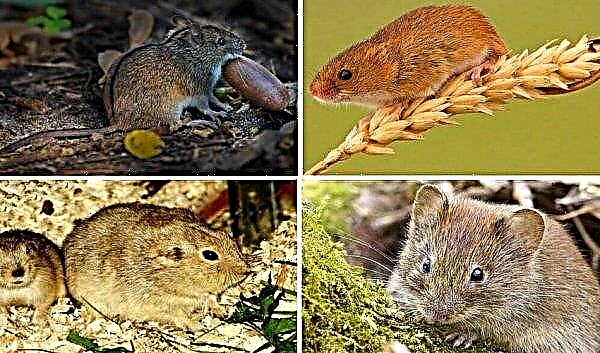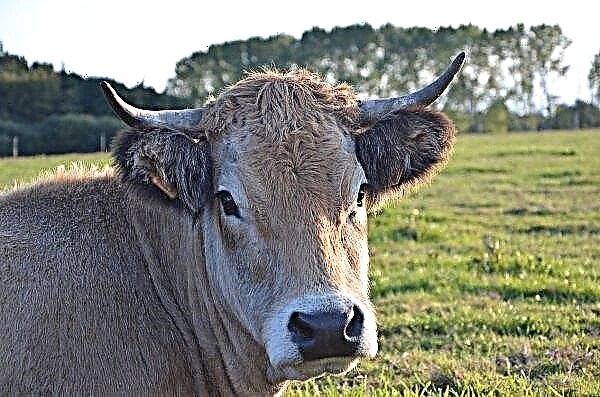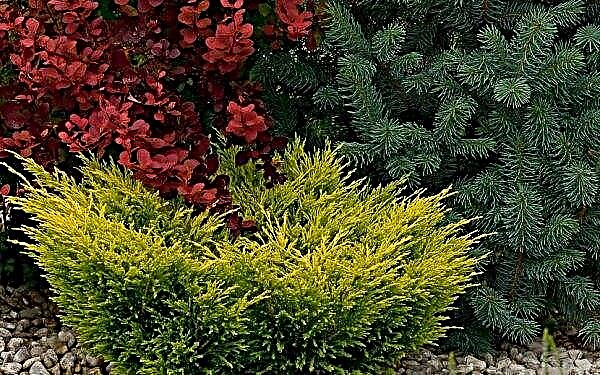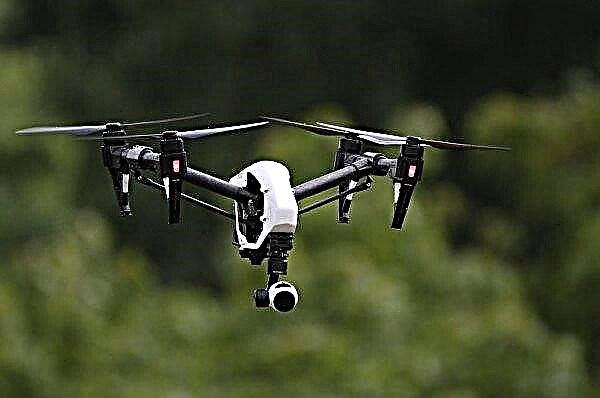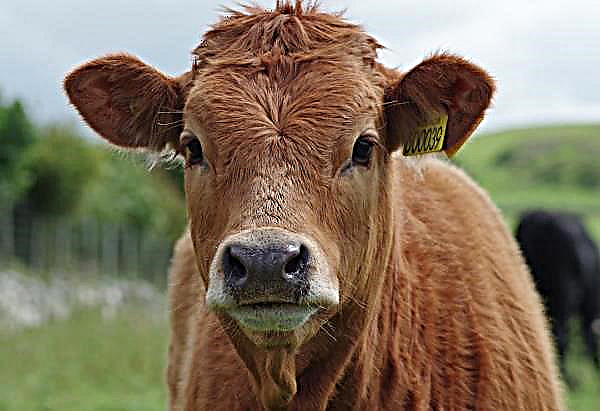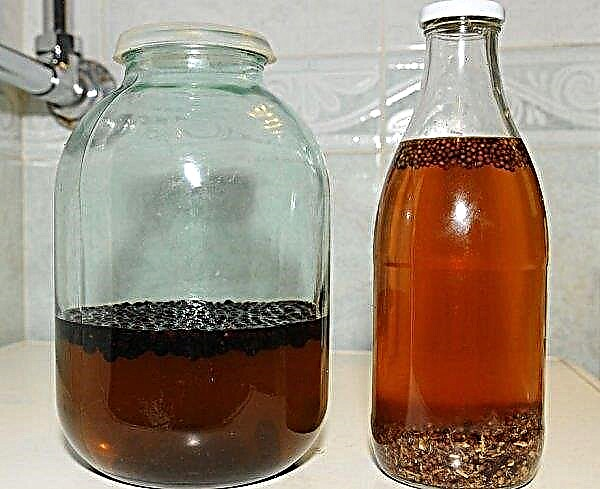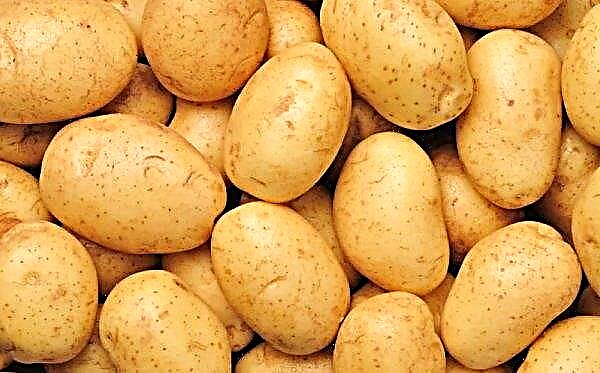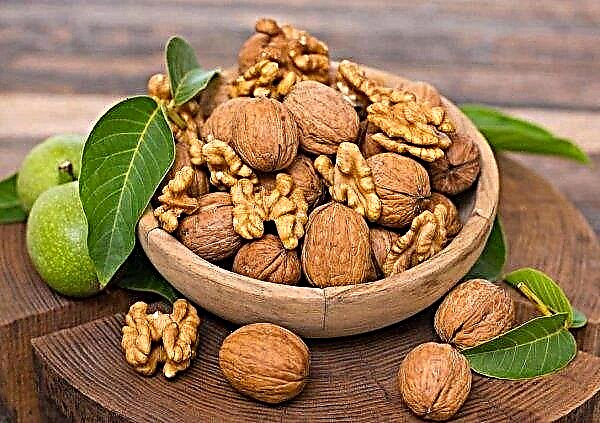Increasingly, landscape designers tend to decorate home gardens with panicle-shaped hydrangeas. These unusual flowers delight the eye with huge inflorescences not only throughout the summer, but sometimes even in the first two months of autumn. And this situation is not surprising, because the plant is unpretentious in care and can withstand the cold winters of our country. One of the varieties that flower growers and gardeners are especially fond of can be called Mega Mindy.
Grade description
Many breeders are working on the creation of new varieties of panicle hydrangea throughout the globe. Their main goal is to develop one that can not only perfectly tolerate even the lowest temperatures, but also bloom for almost 9 months a year. Although they are far from their goal, they still managed to create a good variety called Mega Mindy.
And, indeed, hydrangea turned out to be very beautiful. At the moment of opening the buds, the flower has a white color with a bluish tint. But by the time of full blooming of inflorescences, they are painted in a characteristic pink, and sometimes saturated cherry shade.
The shrub can reach a height of 1.7 m. It has a compact structure. The crown resembles an oval in shape, has a dense branching of shoots. The stems stretch vertically upward. They differ in strength and are able to withstand heavy inflorescences without breaking. Leaves are painted in a dark emerald shade.. They have an oblong shape. Their length can vary from 9 to 11 cm. From above the leaves are slightly rough, turn yellow in the autumn.
Pretty large flowers hang from racemose inflorescences. The first buds open in the second half of July, and fall in early October. If the weather is warm these fall days, then flowering can continue until the colds.
Quite a lot of gardeners collect dried hydrangea inflorescences.. From them they create bouquets. With their help, you can decorate living rooms before spring. If the panicle is not cut off and remains on the bush for the whole winter, then it will not change its color. It is this feature that makes the shrub so decorative. It is impossible not to mention that the hydrangea Mega Mindy tolerates severe frosts, which is why this variety is ideal for growing in our country.

Landscape design application
Panicle bush is ideal for creating unusual and original compositions in landscape design. Here he most often plays the role of a tapeworm. The description of the designers indicates a good combination with other plants. However, the bush looks perfect with a single planting. If there are a lot of plants, then those that can grow on acidified soil should be selected. The plant is ideally combined with conifers and shrubs, other deciduous plantings. Using this variety, you can create an artificial fence or hedge, an alley in the garden.
Landing
Hyndrangea Panicula needs to choose the right landing site. She needs comfortable conditions so that the shrub can develop normally, so you should know in advance how to create them.
Best deadlines
Any variety of hydrangea, including Mindy, must be planted in early spring. At the same time, the process itself cannot be delayed, since the plant will begin to grow. To speed up development, experienced gardeners recommend cutting the seedling to 2/3 of its height. You can use only the garden tool that has undergone preliminary disinfection.
Site selection and soil preparation
Contrary to popular belief, it is necessary to choose a dry site. Its moisture can subsequently be increased by adding water. The plant willingly develops in a moderately moist, well-lit area. But planting in direct sunlight can lead to the death of shrubs, so more and more often choose the eastern side of buildings, structures or tree plantings. It is in this place that the soft morning rays of the sun will fall on hydrangea, and the rest of the day it will remain in partial shade.
If the earth is very humid, this can lead to the development of fungal diseases. If, for some reason, you have to change the place for hydrangea, the bush tolerates the transplant. Soil should be chosen fertile and loose, saturated with organic substances.
To fill up the prepared landing pit, you need to create a special substrate. It includes:
- 2 servings of sheet land;
- 2 servings of peat;
- 1 serving of sand.
Important! The variety does not feel well on alkaline soils, so you should choose a slightly acidic soil composition.
If the acidity of the soil is below 5 pH, then it is artificially acidified. To do this, you can create a layer of mulch or add food acids or organic fertilizer. Mulching is carried out by means of waste from the processing of conifers of trees and shrubs - sawdust, bark or needles. You can also 1 tsp. dilute citric acid in 10 l of water. This composition is recommended to water the soil before planting for 2 weeks. Manure perfectly oxidizes the earth. It should be applied before planting and at the stage of shrub care.
Landing algorithm
The whole landing procedure is conditionally divided into several main stages:
- Preparing the landing recess in the ground. Diameter and depth should be approximately 1 m. The pit is filled with 1 bucket of sawdust mixed with compost. All this mixture is filled with water. To accelerate the development of the plant, you can add a couple of tablespoons of superphosphate. Now the recess is completely ready for landing, which can be carried out in two days.
- Creation of drainage. Since hydrangea loves abundant humidity, it is recommended to create a layer of fine pebbles or broken brick at the bottom of the recess. It will prevent the outflow of water from the roots of the plant.
- Preparation and installation of a seedling. Planting material is carefully removed from the container. A large lump of earth should remain on the roots. Together with it, the bush is placed on the drainage layer so that the root system is in the center of the pit.
- Falling asleep and watering. A previously prepared substrate is poured over the root system. The soil on top is slightly tamped. A watering procedure is required. It is believed that for the first time, 1 bucket of water is enough.
 Immediately after planting, the plant is left alone for a while. It must independently take root in a new place.
Immediately after planting, the plant is left alone for a while. It must independently take root in a new place.Care
The description of the process of caring for Mindy is not very strict. The only attention should be paid to humidity. The earth under the hydrangea bush should always remain moist. However, an excess of moisture is not allowed. If the water stagnates for a long time, this will lead to rotting of the roots.
The rest of the bush is not very whimsical, so the description of the care is quite simple to implement and does not require large expenditures of time and energy from the grower.
Watering
This procedure is carried out in order to moisturize the trunk circle and the surface around it. After this process is completed for the first time, a layer of mulch is created. Thanks to him, water will evaporate less. Accordingly, the irrigation procedure can be carried out less frequently, for example, once every 2 weeks.For one bush, it is considered the norm about 7-10 liters of water for 1 week. If the weather in the summer is too dry, then the amount of liquid can be increased up to 2 times in 7 days.
Top dressing
Since the variety develops rapidly and blooms profusely, it will need to create additional nutrition with useful substances. Feeding is carried out at least 4 times during one year (season). Such saturation with nutrients implies an alternation of organic and mineral fertilizers.
For active growth, the bush will need urea and potassium sulfate. In June, when inflorescences begin to form, hydrangea needs additional fertilizing with potash and phosphorus fertilizers. The solution prepared on the basis of "Kemira Flower" is ideal for the flowering phase. This introduction of the drug is recommended at least 3 times over the summer. At the end of the season, it is recommended to fertilize the plant with superphosphate or potassium sulfate.
Did you know? Buddhists appreciate tea made from hydrangea flowers. They consider it a ritual drink.
Pruning
Pruning is one of the most important procedures that is part of the shrub care process. In most cases, except in emergency cases, it is performed twice a year. For this, a day is selected at the very beginning of spring and at the end of October. In the first case, it is recommended to start trimming hydrangea before the kidneys begin to form. If it is not carried out, then the flowering will not be so magnificent.
At the time of this process should be guided by three basic rules, namely:
- Damaged and frostbitten shoots are removed.
- Weak branches are cut that do not contribute to the growth of shrubs.
- Shoots that appeared only last year are cut off to the presence of 4 buds.

In the fall, the pruning process is more relaxed and easy. It is enough to remove all the inflorescences that have bloomed. This is done to prevent breakage of the shoots when snow falls. Anti-aging pruning is considered distinctive. It is also performed in the fall. The essence of the correct technique is to leave 3-5 of the strongest shoots, and cut the rest to the very root. The first visible results can be seen in the second year of the development of the bush.
Flowering care
As already mentioned above, in order for the inflorescences to be lush and large, a special fertilizer should be applied during the blooming period. This is a mixture that is prepared on the basis of water and the drug "Kemira Flower". Watered with this composition 3 times for the entire flowering period.
In some cases, you will need to prune the branches with the largest inflorescences that pull the shoot to the ground. This is to prevent cracking. If any diseases or pests have been noticed during flowering, they should also be removed. Shoots with ailments are cut and burned, and insects are fought by spraying the bush with insecticides.
One of the most important factors of care during this period is considered watering. Moisture should always remain under the bush. At the same time, water should be added only in the early morning or evening to avoid burns on the leaves and flowers of the shrub.
Proper wintering
An adult plant does not need any preparatory actions on the part of the gardener in preparation for wintering. It is enough to create a thick, 10 cm, layer of mulch in the autumn period. Young seedlings, especially those planted this spring, need special wrapping.
You can perform this procedure in the following ways:
- You will need to find or purchase wooden boards. Their length should be about 0.5 m. They are laid around the bush directly on the ground. In random order and shape, the shoots remaining after the autumn pruning are bent to them. They can be fixed between the boards. After that, wooden materials of similar shape are laid on top. To press branches of a bush is strictly prohibited. Agrofibre is laid on top of this structure. All this construction can be additionally insulated with coniferous spruce branches or branches of other plants. In addition, sawdust, any non-woven fiber, bags with leaves are used to create shelter. If mold is found on the shoots in spring, it can be removed with a damp cloth.

- An alternative method is considered to be an air-dry shelter. The shoots bind together to make an even stack. They are wrapped with insulation material - spandbond or lutrasil. After that, a perimeter grid is set around the perimeter. Such a frame should be 15–20 cm above the bush itself. Dry leaves are placed inside the fence. This structure is covered with an additional layer of roofing material or ordinary plastic film.

Do not worry if hydrangea is cold in winter. After spring pruning, the bush will begin to grow again. But inflorescences this year should not be expected.
Breeding
Hydrangea cultivars Mega Mindi can propagate in four main ways:
- by seeds;
- cuttings;
- layering;
- division of the mother bush.
Each of the methods is characterized by the complexity of the process. Which one to choose, only the gardener decides.
Seeds
Seed obtained from plants of this season does not need additional processing. In other words, it can be immediately sown in a prepared container. At the same time, it is not recommended to deepen the seeds into the soil.
After sowing, the box is covered with film or glass. If necessary, moisten the earth before this process. In this form, the container is placed on the windowsill. It is recommended to avoid direct sunlight. After 20 days, you can observe the first miniature sprouts.
Important! This method of reproduction is suitable only for wild species of hydrangea. If you plant seeds of an artificially derived variety, the adult plant will lose its decorative properties.
Care for new shoots is carried out for 2 years. Only when they turn 3 years old, they are transferred to a permanent place in the open. Gardeners report that by this time they should grow to a height of at least 30 cm.
Cuttings
This method of reproduction is quite popular among gardeners who grow hydrangea in their infield. Green cuttings are prepared at the moment when the first buds appear on the shoots. This is approximately the second half of July. They are cut only from young bushes. An excellent source material will be those branches that appeared last season. Moreover, they must grow on the side of the plant and have at least 5 large buds.
The best time for cutting cuttings is considered to be early morning. At this time of day, moisture has not yet had time to flow to the top of the shoot. The cut branch is immediately placed in the water. They also quickly begin to form the cuttings themselves. To do this, you need to trim the top of the shoot, leaving it with a maximum of 5 green leaves. The lower ones are completely removed, and the upper ones are cut to half. Ready stalk for 30 minutes is immersed in the composition of the growth stimulator, a striking example of which is "Kornevin."
After this, the shoot is placed in the ground, which is made in advance from peat, sheet land and sand. A large container is suitable for landing. Cuttings are watered once a week, provided the soil surface is constantly moistened. The amount of water application depends on this indicator. As soon as the crust of the earth begins to dry out, watering is carried out.
A month later, in most cases, the cuttings are already rooted. You can store them in the house, but with the onset of autumn, it is better to take them out to the barn or cellar. Here they will be affected by low temperature, which contributes to the development of plant immunity to frost. If necessary, you can insulate the sprouts with leaves.Layering
The breeding procedure is carried out in early spring, when the juice inside the plant has not yet begun to circulate. On either side of the bush, a one-year shoot is selected, which is placed in a recess in the ground. The pit should be no more than 2 cm. Escaping carefully so as not to damage its integrity, fits into it and digs it on top of the ground.
Over the summer, he manages to take root. In this case, it is necessary to constantly water the place of the layering. When shoots are formed, the height of which will be at least 30 cm, they are removed from the mother branch. The planting procedure is similar to planting seedlings.
Did you know? All parts of the plant contain toxic cyanogenic glycosides (hydrocyanic acid), so when eating the plant, poisoning can occur, causing weakness, nausea and pain in the stomach.
Dividing the bush
In order to divide the mother bush into several parts, it must first be removed from the earth. For this, the plant is abundantly watered. Water should completely saturate the earth. Using a pitchfork or shovel, they dig out hydrangea. Then, using secateurs or scissors, several branches are separated from the main root. They can be immediately transplanted to a new place.
You can do without digging the whole bush. To do this, on the one hand, you need to make a small undermine with a pitchfork and cut off part of the root with shoots directly in the ground. The planting procedure is similar to that described in the paragraph “Planting”.
Diseases and Pests
Hydrangea Mega Mindy, like any other, can suffer from certain diseases and pests. If you have any other problems with hydrangea, you need to seek help from specialists.
Among the most popular are:
- Spider mite. Insects can be found in the lower part of the bush. Presence is determined by folding or yellowing of leaves, the formation of a web. A drug called Theophos will help cope with the pest.

- Downy mildew. Almost the entire plant is covered with specific yellow spots with oily secretions. The size of the neoplasms is small. If you do not take measures, then these spots become larger in size and can connect with neighboring ones. To rid the plant of the disease, it is recommended to spray it with copper sulfate with the addition of soap.

- Chlorosis. It is indicated by a sharp change in the color of the foliage of the shrub. Usually appears due to a lack of iron, which means a decrease in the level of soil acidity. It is enough to spray with potassium nitrate and add iron sulfate to the ground.

- Leaf aphid. Usually appears on the shoots of a bush that grow in greenhouses. To eradicate the pest, the ground part of the plant should be treated with a mixture of anabazine and sulfate.

In order for the Mega Mindi hydrangea variety to successfully grow and develop on a personal plot, it is necessary to adhere to all the above rules and guidelines. Only in this way can truly grandiose results be achieved - an increase in the size of the flowers, a more saturated color of the inflorescences, and the plant's resistance to frost. You should not be lazy to do work in the garden, because the splendor of hydrangea is worth the cost and effort, and time.








